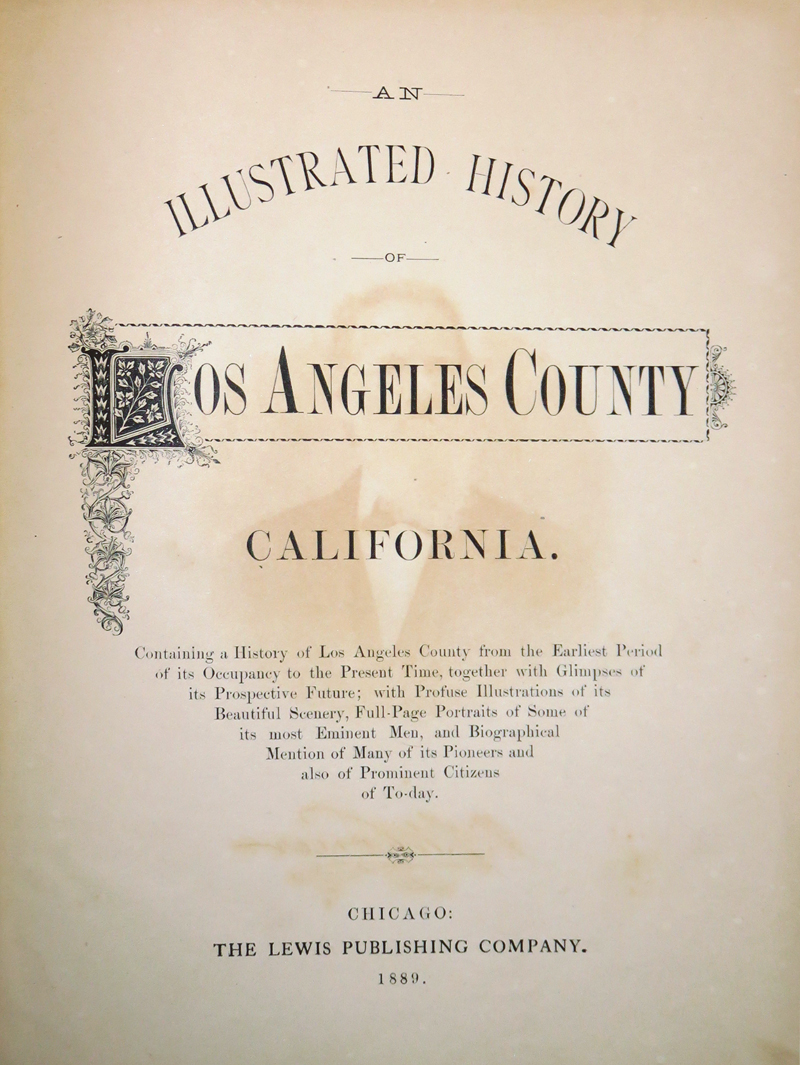|
|
Ygnacio del Valle.
Pen Pictures From the Garden of the World:
An Illustrated History of Los Angeles County, Calif.
Chicago: The Lewis Publishing Co., 1889, pp. 442-443.
|
Don Ygnacio del Valle, long a prominent and useful citizen of Los Angeles, was a native of Jalisco, Mexico. He was born July 1, in the year 1808, and was the son of Lieutenant Antonio del Valle, a soldier under the King of Spain. He came to California with Echandia [sic; s/b Echeandia] in 1825. In 1841 he settled on the San Francisco Rancho in this county, which had been granted to his father. Don Ygnacio and Don J.A. Aguirre received a concession in 1843 of the rancho of Tejon, twenty-two Spanish leagues[1], but which now belongs to General E.F. Beale, of Washington, D.C. In 1846 Don Ygnacio was treasurer of the civil government of California; in 1850 he was alcalde [similar to mayor] of Los Angeles; and later was a member of the city council and also of the State Legislature. He was a man of culture and intelligence and of much influence in the community. His city residence for many years and until 1861 was on the east side of the Plaza. At the time of his death, in 1880, his home was on the beautiful Camulos Rancho, on the Santa Clara River, in the northwestern part of Los Angeles County [sic; s/b Ventura County][2], where his widow and her family still reside. It was here that Mrs. Jackson located some of the most poetic and romantic scenes of the story of "Ramona." Don Ygnacio possessed the most unbounded confidence of the community in which he lived, both under the Spanish and American regimes [sic; s/b Mexican and American], as is evidenced by his being entrusted with the responsibilities of office, either military or civil, during the greater part of his mature life. He was a Lieutenant from 1828 to 1840, and served on the staff of both Governors Echeandia and Figueroa. In 1834 he was appointed by the latter to serve as commissioner in the secularization of the missions. He carried out the provisions of the law in the cases of the missions of Santa Cruz and Dolores. Later he held other important official positions, as noted above, always performing his duties faithfully and honorably. Don Ygnacio was twice married. There were no children by the first marriage. His second wife, whom he married in 1851, and who still survives him, was Doña Ysabel, daughter of Don Servol Varela, and granddaughter of Don Antonio Ygnacio Abila. Six children were the result of this union, all of whom as still living, including ex-Senator Reginaldo F. del Valle, the wife of Juan Forster, etc. The memory of good Ygnacio del Valle is pleasant to many citizens still living, outside of his own family. This warm, kindly feeling with which he is remembered yet by all those who were acquainted with him personally, is voiced in the following closing lines of a notice of his death, written by one who knew him well, Judge Y. Sepúlveda, and which appeared in one of our daily journals: "There is much in his life to engage our affections and respect. Few men have impressed upon the memory of their friends a livelier sense of excellence and unsullied virtue. In the private and domestic circle he was greatly beloved. He was confiding and affectionate. He possessed an enlightened benevolence and a warm sensibility, always eager to advance those who were within the sphere of his influence. He was a man of the most inflexible honor and integrity, a devout lover of truth, conscientiously scrupulous in the discharge of his duties. The voice of censure rarely escaped from his lips. "He had a deep sense of religion. His faith was such that it imparted serenity and confidence. He was modest and reserved, of thoughtful aspect, but not cold. With those with whom he was intimate he indulged in playful and delicate humor. No man had a sounder judgment. The tears that fall on his grave are unstained by any mixture of bitterness for frailty or vice. H lived as a true man would wish to live. He died as a good man would wish to die. 'How beautiful is death when earned by virtue.'" Webmaster's notes. 1) A league (legua) is generally the distance a person can walk in an hour, or three miles. However, as a unit of area in early California, a Spanish league is equal to 25 million square varas, or 4,428.4 acres. 2) Ventura County was formed Jan. 1, 1873, out of Santa Barbara County. Text has been divided into paragraphs for ease of reading; it's all one paragraph in the original.
|
• C. Rasmussen Story
Ygnacio Family Tree
Ygnacio 1808-1880
Family History: Del Castillo 1980
Del Valle Branding Iron, RSF 1830s-40s x5
Livestock Ledger 1853
History of Ownership
Wolfskill Foreclosure 1864
Labor Records
1919-1924
Ygnacio's L.A. Property 1871
Envelope: Reginaldo to Ysabel 1877–1883
James Walker Art
(1818-1889)
Ygnacio Bio 1889
Ysabel 1837-1905
Description 1879
Bedroom ~1890
Reginaldo Nominated Lt.Gov. 1890
Pico Oil Connection
Probate Filing, Death of Juventino, 1919
Reginaldo 1854/1938
Reginaldo Bio 1889
Lucretia 1892/1972 (Multiple Entries)
Nor. Cal. Basket mid-1800s
Bell, Portrait Come Home 10/28/2017
Reginaldo Recognized at UCLA 5/24/2019
|
The site owner makes no assertions as to ownership of any original copyrights to digitized images. However, these images are intended for Personal or Research use only. Any other kind of use, including but not limited to commercial or scholarly publication in any medium or format, public exhibition, or use online or in a web site, may be subject to additional restrictions including but not limited to the copyrights held by parties other than the site owner. USERS ARE SOLELY RESPONSIBLE for determining the existence of such rights and for obtaining any permissions and/or paying associated fees necessary for the proposed use.























